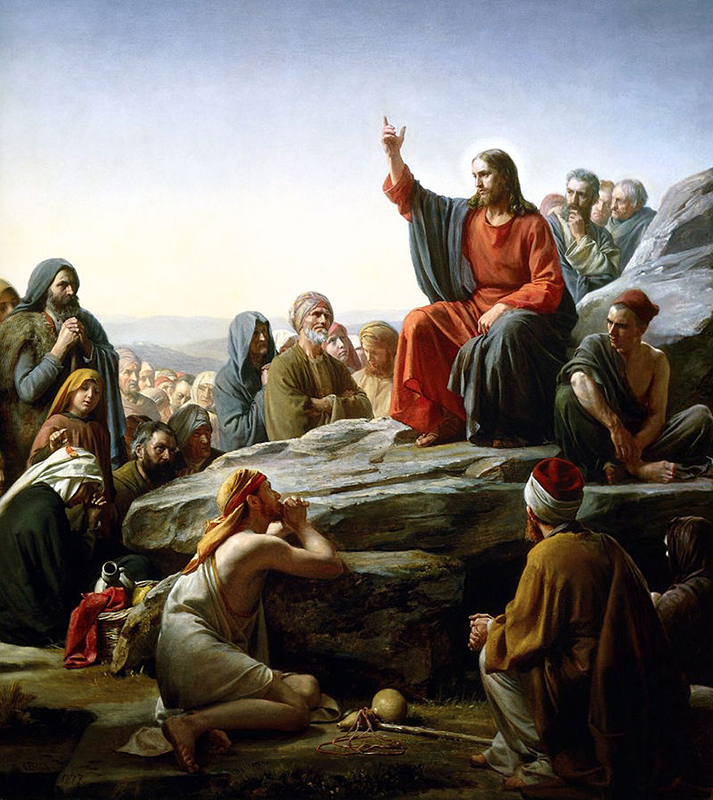Various philosophical and psychological convictions suggest that man’s imagination, in every aspect, including in creation of a painting as form of art, does not extend beyond ‘reality’. ‘Reality’ remains – despite all visible deformations, even in a wildest abstraction in an art work. The logic extended to support this statement is that the concept of reality is not limited to mere external reality – it also extends to the reality of the mind, thought and emotion of the artist; and therefore every element on the canvas, be it colour, form, object or space etc. has a meaning. This meaning find roots in immediate surroundings of the artist, which include the convictions of the milieu and the social setup in which one is located, contributing to past and present experiences of the artist; and also very much in the aspirations and fears of that individual owing to personal experiences.
A painting by any artist, therefore, may be read as a whole, in various interpretations by various viewers coming from various milieus, but the intricate meaning, objectives and intend of the work can never be deduced without having considered the connotations of various elements used by the artist for construction of the same; which are, in this context, referred to as signs and symbols in the paintings.
‘Iconography’ developed as science of identification, description, classification, and interpretation of the obscure language of signs, symbols, themes and subject matter in visual arts. It is a vast and limitless subject for discussion, hence, the limited words of this text permit mere mention of the gist of few concepts involved, through few examples of signs and symbols within certain themes and subject matter inscribed in certain artworks.
The topic has been touched in a spur of fascination with universal human emotions, faith and convictions running through generations and races, while painting an artwork entitled ‘Guru Nanak’, created in traditional style, as beginning of series of paintings around the subject ‘Study of the Origins of Philosophy and History of Sikhism’.
The Halo encircling the crown chakra of the figure of Nanak enticed as it a symbol shared by most spiritual philosophies to suggest a figure as saintly; wherein most of these philosophies are built through similar ideas at roots. Consider the concept of Jesus, for example, along with that of Guru Nanak. The halo in either depicts their saintly nature and ‘enlightenment attained’, having come in connection with universal spirit. In both cases, the idea of them being homoousios, “of one substance” with God (the Father, in Christianity and WaheGuru, the Supreme Being in Sikhism) is strong.
At the same time, the hand symbol in representations of both with fingers pointing the sky has similar meanings in the sense that both point out at the supreme/higher being apart from them.
As concerns various Christian faiths, the idea of trinity is added to this gesture, the hand symbolises the three persons of the Christian Godhead: the superior one- the Father, the Son, the saviour and the Holy Spirit – the presence and power of which is essential if a mortal is to live as God intends he should. ‘The Sermon on the Mount’, for instance, a collection of sayings of Jesus, found in the Gospel of Matthew chapters 5, 6 and 7 is the longest of the teachings of Jesus in the New Testament points out at the higher spirit, includes the Lord’s Prayer, and central tenets of Christian discipleship emphasizing that ‘God’s children are those who act like God’; The fact inspired the Danish painter Carl Bloch to paint ‘Sermon on the Mount’ in 1877 by with a certain hand position and a finger pointing the sky.
As for Sikh belief, the finger again symbolises the higher one. However, this symbol falls within the doctrine of ‘monotheism, ‘One God’ (Ek Om Kar), born as a movement against plurality of Gods in prevalent Hindu religion of the era. Sikhism may also be called ‘Panentheistic’, meaning that God is present in creation. God is not the universe, but the life within it, the driving force. Therefore, they too believe in presence of the divine soul within man. However the enlightened souls of their corporal Gurus, serve the purpose of guidance, helping man realise and follow the right path in various aspects of life, but are not means of serving them to live their earthly life better – every individual is supposed to learn to fight own fight in mortal nature of his being as a human. The word ‘Sikh’ finds its etymological roots in Sanskrit language, ‘śişya’, meaning disciple.
Study of signs and symbols situate an artwork in a specific time in history and also in the cultural contexts. Symbolic meanings may only be meaningful to a specific culture. The above mentioned hand gestures, for instance, are interpreted in a rich difference in Buddhism. Hand gestures of Buddha are called Mudras and of the common Buddhist Mudras, the Vitarka Mudra is the one that most resembles that of Jesus Christ’s right hand Icon. Essentially, the Buddhist mudras are didactic: these hand gestures are designed to convey a particular message to the followers; and while, Buddha holds his hands in a certain form and the devotees are to remember a certain teaching.
New Age techniques interpret the similar hand gestures differently, for example, as sign of ‘Om’ in contemporary practices like yoga.
At another level, Iconography witnesses questions regarding conventional meanings of symbols owing to evolution of thought process within fleeting frameworks of time. The contemporary American author, Dan Brown explores the painting ‘The Last Supper’, a late 15th-century mural painting by Italian artist Leonardo da Vinci in his book The Da Vinci Code. The book explores the very core aspects of Christianity by , for instance, highlighting the ‘absence’ of Halo in all figures in this painting, including in that of Christ, questioning if the artist had questioned the faith by presenting them all without halos- was it a sign , suggesting that they may be simple mortals, rather than holy spirits. The lack of halo definitely attracts attention to the socio- cultural turmoil of Rome of the era; at the same time, in words of Dan Brown, the book, questioning such codes (in paintings), can be used as “as a positive catalyst for introspection and exploration of our faith.”
One can decipher the issue as mere perception of the author of the contemporary era, in a time frame different from the era of creation of the painting, engaged in a noveau thought process in contemporary milieu in times deprived of acknowledged saintly figures. In here, Iconography makes reference to ‘Natural Subject Matter’, which is recognizing forms and situations that one has known from their own experience rather than identification of conventional meanings associated with forms and figures as bearers of narrative or symbolic content…
Symbols can be deciphered at all levels in paintings. The universal meanings of a depiction as simple as that of a crow may be understood as a visual metaphor of death in most cultures, and a white dove as symbolic of new beginnings, peace, fidelity, love, luck and prosperity. At the same time, other ‘culture specific’ codes interpret dissimilar meanings in reference to different regions of the world- the colour white symbolizing purity, elegance, for instance, in western depictions, may connote bad luck and mourning in Asian countries, as it is a colour mostly worn to mourn deaths.
At another level, signs and symbols may also carry specific metaphorical/allegorical connotations for particular artists. The lance used repetitively by Picasso, Spanish painter (1881 – 1973) in many of his works, was a secret representation of a solemn revolt to wars by individuals of his era.
To mention even more intimate illustrations of such codes is a vivid example of Russian painter Natalia Gancharova (1881–1962). This artist too painted the subject of war and the ‘instruments’ used for war, like airplanes etc. , but, along with the protective symbols like fairies: the reason was that she lived with the constant worry that her beloved Larinov (who was serving at the front) would lose his life while in service.
It was depiction of personal anxiety, wishing well for a loved one, while of course, such depictions shouted social issues attacking the intimate life of individuals, disturbing the personal peace of the mankind.
Various artists employ use of signs and symbols to express a certain theme or to enhance their subject matter. Indian Painter S.H. Raza (1922-2016), settled in Paris explored and represented the symbol of the ‘dot’ or the ‘Bindu’. This was the pivot point of majority of his works, with intention to highlight the Indian vision and ethnography which holds a ‘Bindu’ as the centre of creation and existence. From the concept of Bindu, his themes progressed towards forms and colour as well as energy, sound, space and time. This process called for inclusion of schemes around the Tribhuj (Triangle), which bolstered Indian concepts of space and time, and later, the theory of ‘Prakriti-Purusha’ (the female and the male energy). It was an entire movement of illustration of thought and realisation of the concepts of Indian philosophy through a simple dot.
As we look for meaning in everything around us, anything can grow into a symbol as artists depict it and audience interpret it in meanings beyond its literal definition, subject to various levels of socio-cultural backgrounds of either. Any and all art, in this sense is a reflection of the intimate self of the artist, and that of the Society as well.


